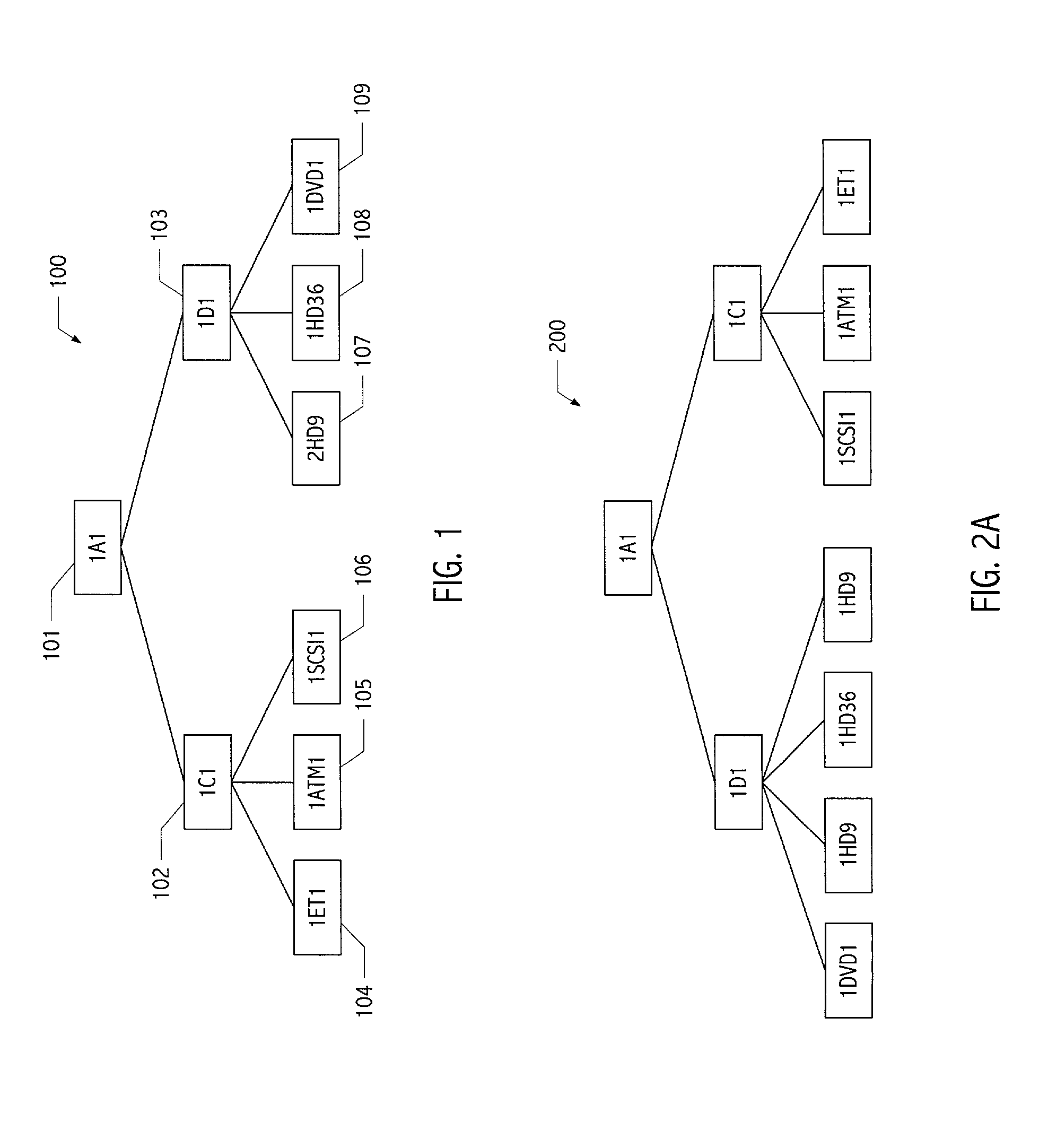Efficient technique for matching hierarchies of arbitrary size and structure without regard to ordering of elements
a hierarchical structure and efficient technology, applied in the field of hierarchically organized information representation, can solve the problem of computationally expensive operation of sorting
- Summary
- Abstract
- Description
- Claims
- Application Information
AI Technical Summary
Benefits of technology
Problems solved by technology
Method used
Image
Examples
Embodiment Construction
)
[0026]Systems, structures and techniques described herein provide a mechanism for transforming, representing and / or manipulating hierarchically-organized data in a way that efficiently identifies and / or encodes identical or equivalent instances. In this way, applications and other software systems that efficiently handle such data organizations are facilitated. Trees (typically implemented as a hierarchy of nodes traversed using pointer chains) are but one example of a hierarchically-organized data structure. In particular, persons of ordinary skill in the art will recognize that other encodings may be hierarchical in organization. For example, without limitation serialized or string encodings may exhibit hierarchical organization. In particular, both information encoded using markup languages (e.g., XML) and information encoded as lists of lists often exhibit hierarchical organization. Although the description that follows employs illustrative hierarchical data organizations that ...
PUM
 Login to View More
Login to View More Abstract
Description
Claims
Application Information
 Login to View More
Login to View More - R&D
- Intellectual Property
- Life Sciences
- Materials
- Tech Scout
- Unparalleled Data Quality
- Higher Quality Content
- 60% Fewer Hallucinations
Browse by: Latest US Patents, China's latest patents, Technical Efficacy Thesaurus, Application Domain, Technology Topic, Popular Technical Reports.
© 2025 PatSnap. All rights reserved.Legal|Privacy policy|Modern Slavery Act Transparency Statement|Sitemap|About US| Contact US: help@patsnap.com



